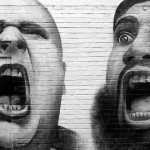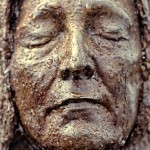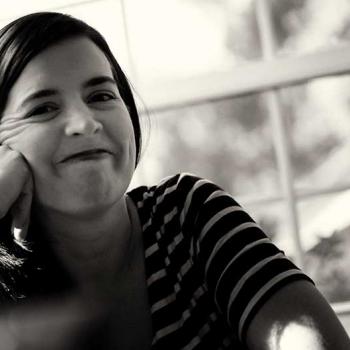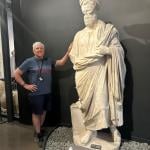By Dr. Richard Peace
Originally published by The SEMI, the student publication of Fuller Theological Seminary.
With another St. Patrick’s Day, we are reminded again of the saint who was credited with the conversion of Ireland. Not many saints’ feast days make it on to our cultural calendar but St. Patrick is one of the lucky (?) ones. Of course it is the idea of drinking green beer, partying all night, and celebrating one’s Irish roots—real or not—that gets the attention of the nation, not the missionary work of Patrick. But still there is something about Patrick that captures our imagination. We have a vague sense of the stories (not all of which are historical): his taming of the fierce Irish tribes; his ridding Ireland of snakes; his use of a shamrock to teach about the Trinity.
I think Patrick interests us, in part, because his sensibilities seem to connect with our postmodern sensibilities. For one thing he saw the created world as a place where God was alive and present. The sun, the moon, and the changing of the seasons were all opportunities for prayer to God. Patrick seems to have an eco-sensibility akin to our own. Then there was his eclecticism. He was not above taking Druid feasts and Christianizing them (rather than condemning them and those who celebrated them). It is said that Halloween and May Day were old Irish festivals that Patrick brought into the Christian calendar. His bravery touches us. He knew that the taming of the Irish would be no small feat. He wrote: “every day I am ready to be murdered, betrayed, enslaved—whatever may come my way. But I am not afraid of any of these things, because of the promises of heaven; for I have put myself in the hands of God Almighty.” The fact that he died of old age in his late 70s is a vindication of this trust.
Who, then, was Patrick and what can we learn from his life? What can we learn from Celtic Spirituality, which had its origin in Patrick, that will feed our spiritual lives?
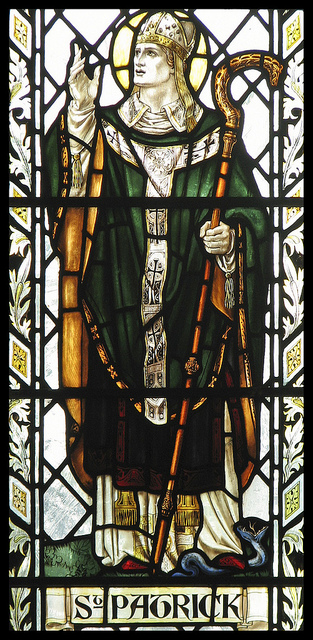
Patrick was, by all accounts, your average 4th/5th century, middle-class, Romanized Briton from a Christian family. By his own account he was not very religious, but that changed after his capture by Irish slavers. As an enslaved shepherd, he converted to the faith he was taught as a child and, after six years as a slave, escapes back to Britain with guidance from visions of God. Back in Britain, Patrick hears a call in another vision to evangelize the Irish. He receives a theological education and returns to Ireland under Bishop Palladius. When Palladius dies within a year, Patrick becomes the new bishop, ordained specifically for evangelism (the first in church history). He charges into the wilds of Ireland, dangerous territory dominated by feuding warlords and slavers. Against all odds, Patrick is soon baptizing converted Irishmen and women in droves.
There is much in this story that resonates with us: how God uses the extremity of our situation to open our hearts to him; how God intervenes in our stories; how God answers prayer; how God calls us; how God uses our history to actualize that call; how God blesses us as we are faithful to his call; and much more. Patrick’s story has the power to enrich our stories by showing us God’s action in his life.
And it is a walloping good story, filled with twists and turns, miracles and blessing, not to mention hard times and hard choices. It is just the sort of story to share with friends on St. Patrick’s Day because Patrick is the ideal postmodern saint. At first glance he appears to be “safe,” uncorrupted by dogma and religion and not at all “church-y.” What with all his eclecticism, incorporating Druid sensibilities and care for creation into his religious worldview, he resonates with a New Age mindset. So Patrick is a good starting point for conversation with our spiritually curious friends since he is already a person of interest. Although we will have to point out eventually that Celtic spirituality—as was Patrick—is, in fact, very church-based with its emphasis on penance, the sacrifice of Jesus, the Trinity, and the practice of compunction (tears shed over sin). Your friends may discover that the church isn’t all that bad as they think.
Well, enough of Patrick. What about the spiritual tradition that emerged from his ministry? Much could be said about the particularities of Celtic spirituality. For one thing, there is this whole idea of peregrinatio (which is related to the English word peripatetic): a journey which God calls us to take even though we know it will be filled with hardship; a journey without a specific goal or destination; a journey on which Jesus accompanies us and out which we get to know him and ourselves on a far deeper level. It was peregrinatio that motivated the Irish monks to return to Europe after the devastation of the barbarian hordes in order to re-Christianize the land. Many of us find God calling us to such a journey today.
And then, as in counterpoint to this idea of journey, there are all the Irish monasteries with their settled life. Patrick evangelized Ireland via the churches and monasteries he founded. When he returned to Ireland as a Bishop he did not return alone. He came with a great company of others, both priests and laypeople. Together they would go into a village and ask permission to set up a church. Here they sang the Hours, celebrated the Eucharist, worshipped God, remembered the feast days and gradually the whole village aligned itself to their timetable, their calendar, and their way of life. In turn, people from the newly Christianized village went with one of Patrick’s priests to another village where they set up a new church and so the cycle continued.
It was out of these churches and monasteries that one of the distinctives of Celtic spirituality emerged: prayers of everyday life. Here is an aspect of Celtic spirituality that has real potential for us today. Our problem, often, is staying alert to the spiritual side of life, bombarded as we are with the constant stream of input that makes up our digital life. Meant by God to live in two worlds, we settle for the one world, the created world, with all its allures. But when we learn to baptize the acts of everyday life in prayer, we stay connected to that other world as well. Celtic prayers, cover every aspect of daily life—the famous “St Patrick’s Breastplate” prayer is the perfect example. The Irish monks and nuns had prayers to bless the seasons, ask for protection, praise the saints, confront the dark forces, and baptize the most mundane of daily tasks.
Try this out for yourself. Write a prayer in Celtic style, i.e., rhyme if possible, make it Trinitarian, make it earthly, make it real. Use it to stay alert to God’s world in which you live, a place sustained by the Holy Spirit. Let Celtic spirituality bring fresh awareness of God’s blessings in your life.
I have made liberal use of Thomas Cahill’s wonderful retelling of the Patrick story in How the Irish Saved Civilization (1995) p. 101ff. For Patrick’s words, see Celtic Spirituality in The Classics of Western Spirituality (1999) in particular “Patrick’s Declaration of the Great Works of God” pp. 67-83.
Dr. Richard Peace is the Robert Boyd Munger Professor of Evangelism and Spiritual Formation at Fuller Theological Seminary. He ministered for eight years in South Africa as director of special projects for African Enterprise, Inc., an evangelism group he helped found. He has written, edited, or co-authored over 80 books, worked as a filmmaker, and currently serves as a media production consultant.
Follow Fuller Seminary on Twitter at @fullerseminary.

